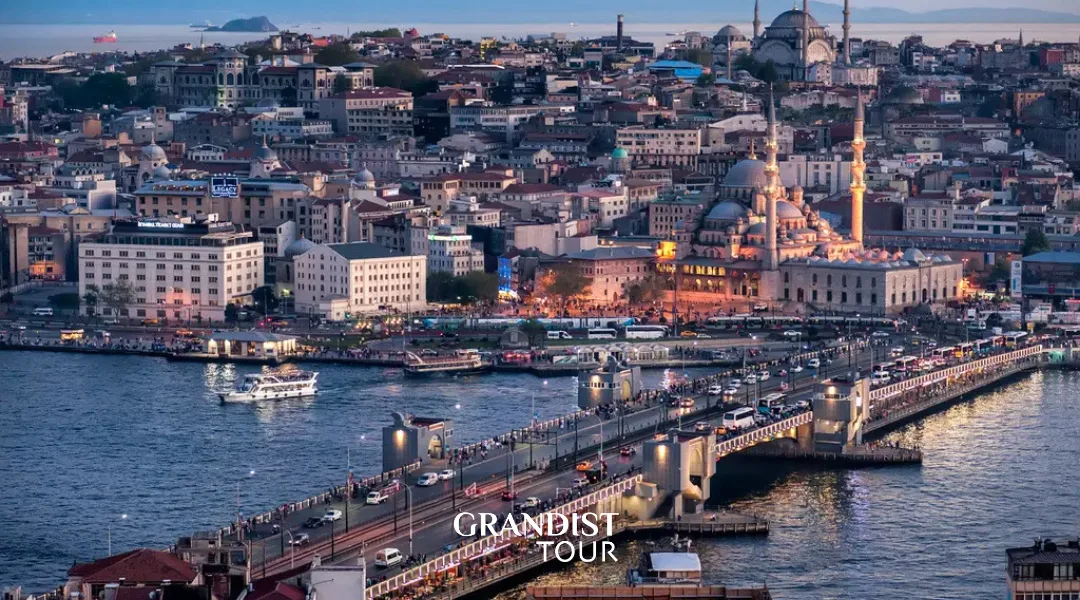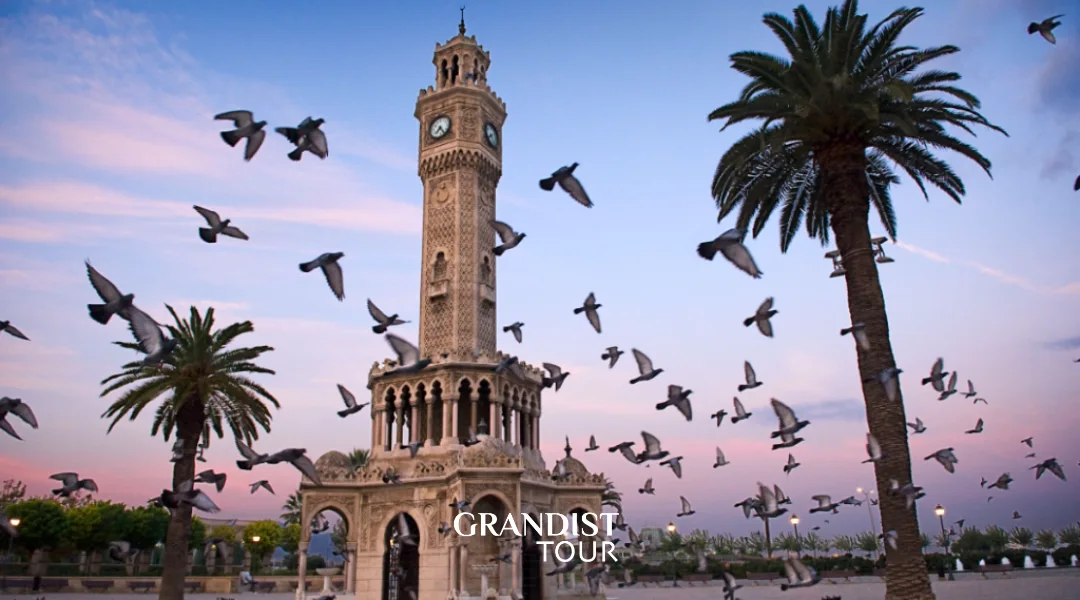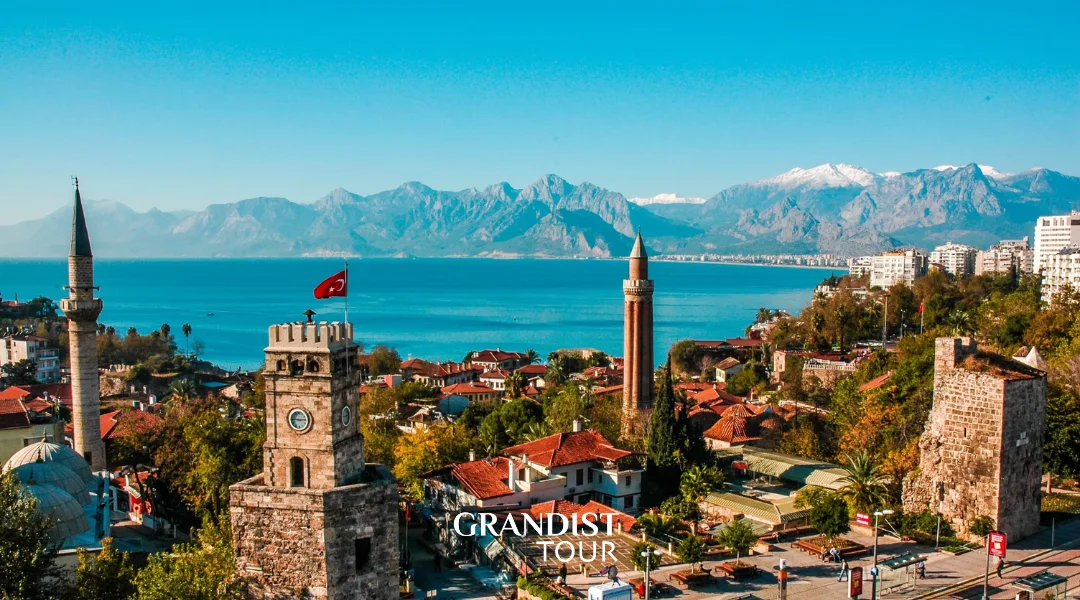Turkey’s Most Beautiful Historical and Cultural Travel Routes
Turkey, with its historical heritage, natural beauty, and cultural richness, is one of the most unique travel destinations in the world. Turkey’s Most Beautiful Historical and Cultural Travel Routes attract millions of travelers every year. If you dream of a trip intertwined with history, it’s worth taking a look at Turkey’s most beautiful historical and cultural routes. Here are the unique places you can discover on these routes:

Istanbul
Istanbul is a city that connects both the Asian and European continents and has hosted many civilizations throughout history. In Istanbul, you can explore one of Turkey’s most beautiful historical and cultural travel routes: the Historic Peninsula. In this area, significant structures such as Hagia Sophia, the Blue Mosque, and Topkapi Palace stand. Istanbul’s historical texture offers visitors traces of the past. Istanbul stands out as one of the leading destinations among Turkey’s Most Beautiful Historical and Cultural Travel Routes.

Cappadocia
Cappadocia is famous for both its natural beauty and its historical and cultural wealth. As one of Turkey’s Most Beautiful Historical and Cultural Travel Routes, Cappadocia is mesmerizing with its fairy chimneys and underground cities. The rock churches and monasteries in areas like Göreme, Zelve, and Avanos reflect the cultural heritage of the region. The underground cities of Cappadocia offer a treasure for travelers who want to explore interesting living spaces from history. Hot air balloon tours in Cappadocia are also an unforgettable experience. Cappadocia, another wonderful option among Turkey’s Most Beautiful Historical and Cultural Travel Routes, attracts thousands of tourists every year.

Izmir
Izmir stands out with both its modern and historical riches. The Ancient City of Ephesus, which is part of Turkey’s Most Beautiful Historical and Cultural Travel Routes, is a paradise for history enthusiasts. Ephesus, having hosted many civilizations from Ancient Greece to the Roman Empire, has a rich cultural history. Structures such as the Temple of Artemis, the Celsus Library, and the Ancient Theater provide excellent opportunities for travelers who want to get a closer look at the ancient world. Ephesus holds an important place among Turkey’s Most Beautiful Historical and Cultural Travel Routes, as it offers both cultural and historical significance. Visiting Ephesus means exploring a civilization that has left its mark throughout history.

Antalya
Antalya, with its great historical and natural wealth, is among Turkey’s Most Beautiful Historical and Cultural Travel Routes. Especially the Lycian Way, a favorite for nature hiking enthusiasts, is located on the eastern side of Antalya. This historical hiking route is filled with ancient cities, rock tombs, and stunning views. The Lycian Way lets you explore the historical ruins while offering an experience in nature. Along the Lycian Way, there are ancient cities like Patara, Myra, and Xanthos. This historical and cultural route in Antalya stands out as one of the must-visit places among Turkey’s Most Beautiful Historical and Cultural Travel Routes.

Mardin
Mardin, located in the heart of Mesopotamia, is known for its historical wealth. Mardin is one of the rare cities that are part of Turkey’s Most Beautiful Historical and Cultural Travel Routes. The city’s stone buildings, mosques, churches, and monasteries reflect the rich past where different cultures have blended together. The Deyrulzafaran Monastery and Mardin Grand Mosque are among the most important religious structures in the city. Strolling through the narrow streets of Mardin and witnessing the cultural heritage of Mesopotamia offers an unforgettable experience on Turkey’s Most Beautiful Historical and Cultural Travel Routes.

Pamukkale and Hierapolis
Pamukkale is famous for its natural beauty as well as its historical ruins. Among Turkey’s Most Beautiful Historical and Cultural Travel Routes, Pamukkale offers a breathtaking landscape with its white travertine terraces. Here, you can relax in the hot spring pools while also visiting the ancient city of Hierapolis. Hierapolis is significant with its Roman-era ruins. Pamukkale’s travertines are known for their stunning formations, shaped like a work of art by nature. Pamukkale and Hierapolis are considered a perfect blend of nature and history among Turkey’s Most Beautiful Historical and Cultural Travel Routes.

Çorum
Çorum has historical significance as it is home to the capital of the Hittites, Hattusa. The Hittite Route, located among Turkey’s Most Beautiful Historical and Cultural Travel Routes, carries many traces of this ancient civilization. The ancient city of Hattusa is filled with rock inscriptions and structures that reflect the Hittites’ lifestyle and beliefs. The Alacahöyük in Çorum also houses many artifacts from the Hittites, making the region an important stop for travelers among Turkey’s Most Beautiful Historical and Cultural Travel Routes.
Turkey has hosted many civilizations throughout history and is rich in cultural and natural heritage. Turkey’s Most Beautiful Historical and Cultural Travel Routes offer unique opportunities for history buffs, culture enthusiasts, and nature lovers. From Istanbul’s historic peninsula to the fairy chimneys of Cappadocia, from the Ancient City of Ephesus to the Lycian Way, each corner of Turkey tells a different story. Pamukkale’s travertines and Mardin’s Mesopotamian culture make Turkey’s Most Beautiful Historical and Cultural Travel Routes an unforgettable travel experience. As you explore these routes, you will dive deep into the past and feel how rich Turkish culture is.
FAQ: Turkey's Most Beautiful Historical and Cultural Travel Routes
Do I need a visa to travel to Turkey?
The visa requirements for traveling to Turkey vary depending on the country of origin. Citizens from Schengen area countries and some other nations are exempt from visas, while travelers from other countries may need to obtain one.
What is the best time to travel to Turkey?
The ideal travel time in Turkey depends on personal preferences and the region you plan to visit, as the climate varies by region. Summer (June-August) is ideal for the Mediterranean and Aegean coasts, though temperatures can be quite high. Spring (March-May) and autumn (September-November) offer milder weather conditions.
How does public transportation work in Turkey?
In Turkey’s major cities, public transportation systems such as buses, metros, trams, and shared minibuses (dolmuş) are widely available. Public transportation systems are quite developed in cities like Istanbul, Ankara, and Izmir. Additionally, smart cards like Istanbulkart can be used for city travel.
What variety of food is there in Turkey?
Turkey has a rich and diverse cuisine, with each region offering different flavors. Dishes like kebabs, mezes, olive oil-based dishes, pide, and baklava are very famous. Fish and seafood are also commonly consumed along the Mediterranean and Aegean coasts.
Are currencies other than the Turkish Lira accepted?
The official currency of Turkey is the Turkish Lira (TRY). However, in tourist areas and large cities, some businesses may accept foreign currencies and credit cards.










